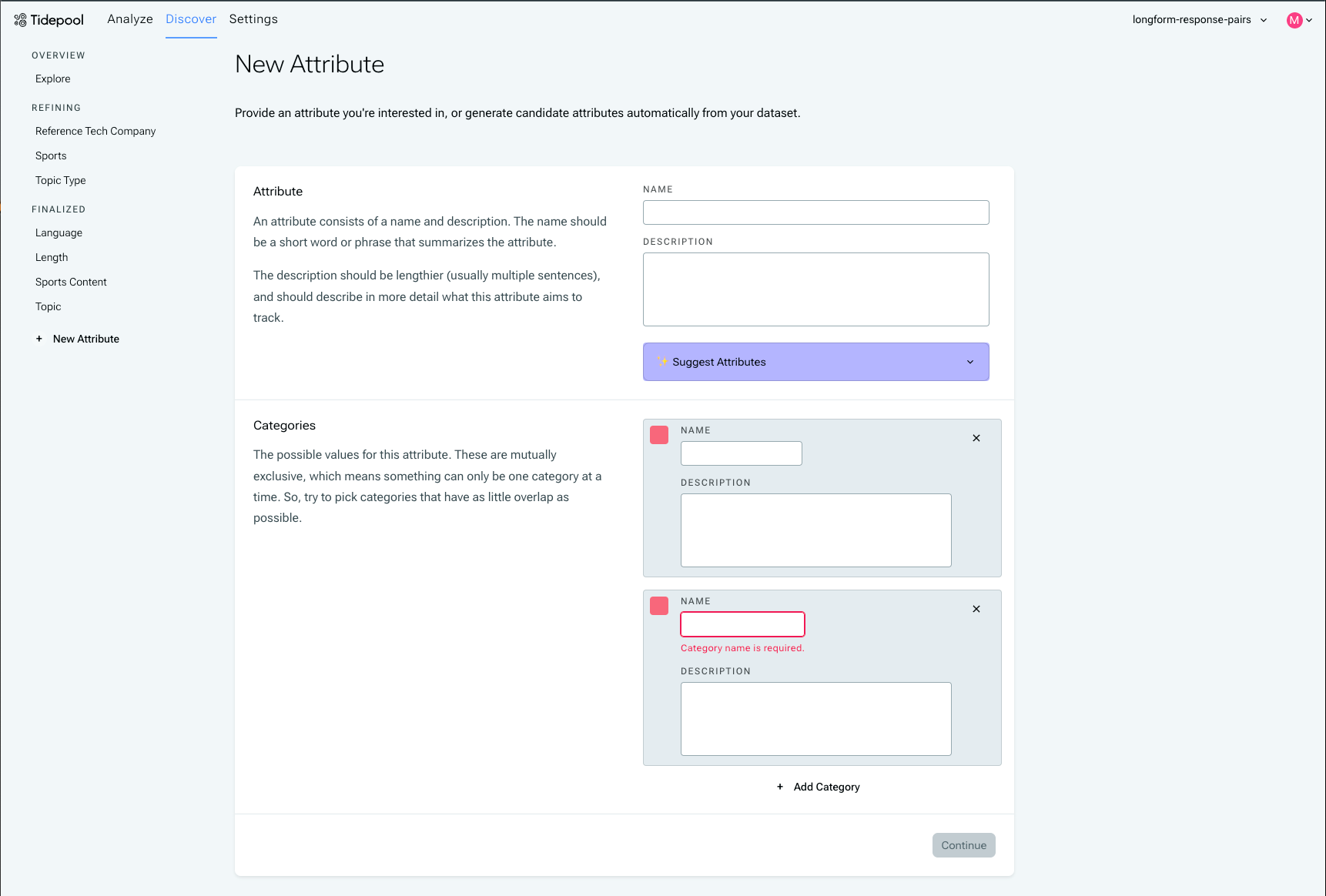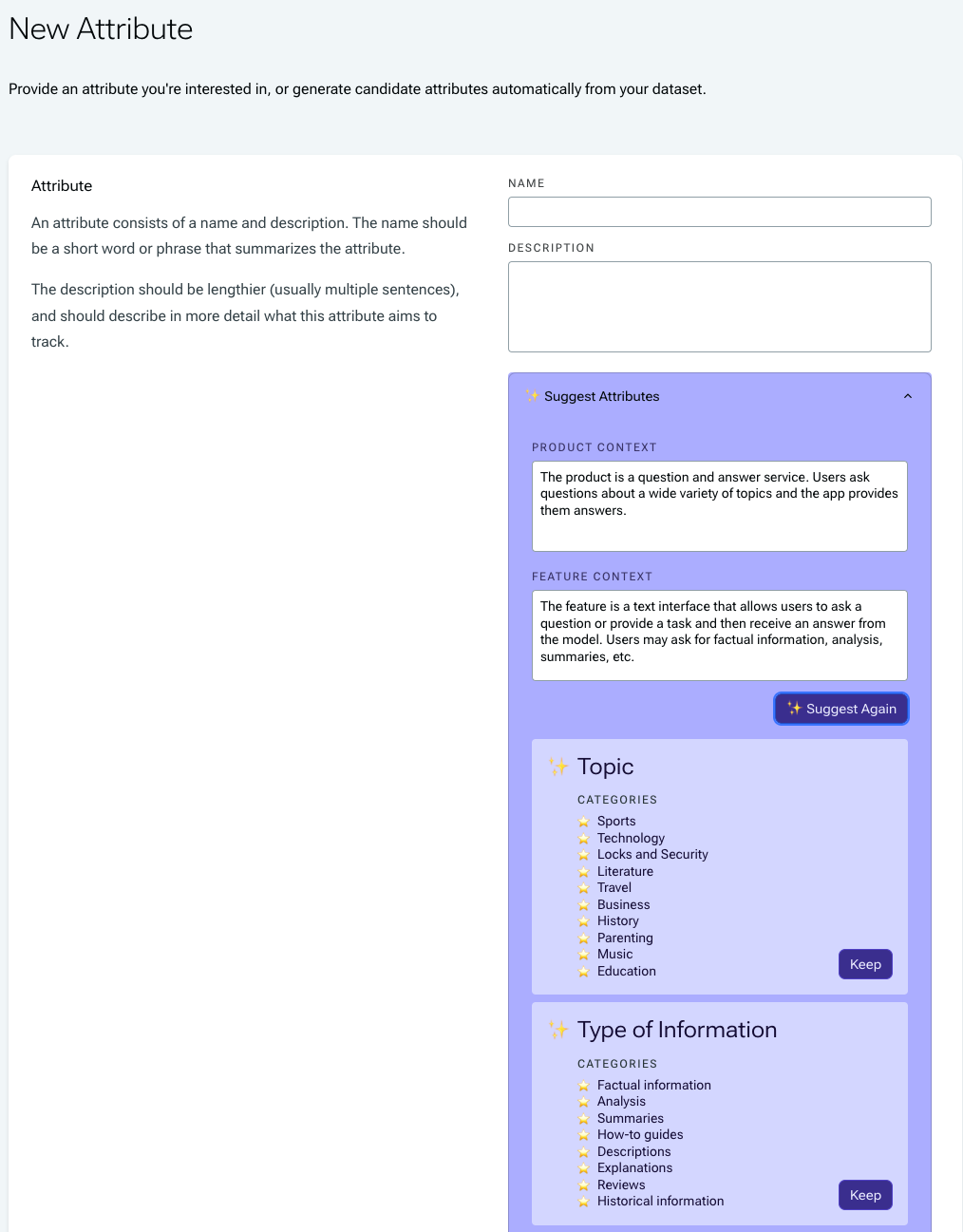Derive Attributes
Attributes enrich your unstructured text data by grouping events into categories.
Prerequisites
This guide assumes you've uploaded some data.
What are Attributes?
An attribute is a set of categories you'd like to group your unstructured text data into. Attributes and categories are the primary way you can enrich your data with Tidepool.
By defining attributes and the associated categories for your data, you can slice and dice your user inputs and model responses into groups of related events. This should give you a better understanding of how people are interacting with the model, and help you make decisions about which parts of your product to invest in.
Example Attribute and Categories
- Sentiment
- Positive, Negative, Neutral
- Language
- English, Spanish, Chinese, German, French, etc.
- Coding Help Request
- Write new code, Troubleshoot Code, Not a Coding Help Request
- LLM Jailbreak Attempt
- True, False
Creating Attributes in Tidepool
Once you've uploaded some data to a project, you can start deriving attributes.
To derive your first attribute, navigate to the Discover tab and click the New Attribute button.

Define a new attribute.
There are two ways to define a new attribute in Tidepool.
- You can create the attribute and its categories yourself.
- You can let us automatically suggest attributes based on context about your app and the data you provide.
If you aren't sure what attribute and categories to use to get started, we recommend either looking through your events in the Analyze view to get a feel for what your users are saying, or letting us suggest attributes for you automatically.
Creating an Attribute Yourself
Simply fill out the form to create an attribute yourself.
- Give the attribute a name and description.
- The name should be a simple way to refer to the attribute - this is how you'll see the attribute displayed everywhere in the app.
- The description should be a few sentences and describe in detail what the attribute should track - it's ok to be verbose in the attribute description as these details will help categorize events properly.
- Fill out the categories for the attribute.
- We recommend providing both names and descriptions for the categories, although descriptions are not required at this stage and you'll have a chance to update them later during the refinement process.
- Categories should be as close to mutually exclusive as possible - each event will only be assigned to a single category per attribute.
- You can have as few as two categories (useful in the case of a boolean attribute) or as many as 25 categories per attribute.
- Click continue to progress to the refinement screen.
Using Tidepool's Suggested Attributes
If you'd like to see automatically suggested attributes, skip filling out the name and description and click the Suggest Attributes button instead.
- Fill out the product and feature context details.
- The product context should describe what your app does and how users interact with it.
- The feature context should describe how the users are interacting with the model, and what they should get out of that interaction.
- We use the product and feature context, as well as information about the data you've already uploaded, to infer a set of possible attributes for the dataset. This may take a minute to run, so stay on the page.
- Choose an attribute to keep. If none of the suggestions are relevant, you can also update your product and feature context and try again.

Suggested attributes based on product and feature context.
- One you choose an attribute, the categories will be automatically populated for you. You can provide descriptions at this stage if you want, or click continue to progress to initial categorization and refinement.
Once you've created an attribute, you're ready to move on to category refinement. Check out the complete category refinement guide here.
Updated about 1 year ago
Now that you've defined an attribute you're ready to move on and refine categories.